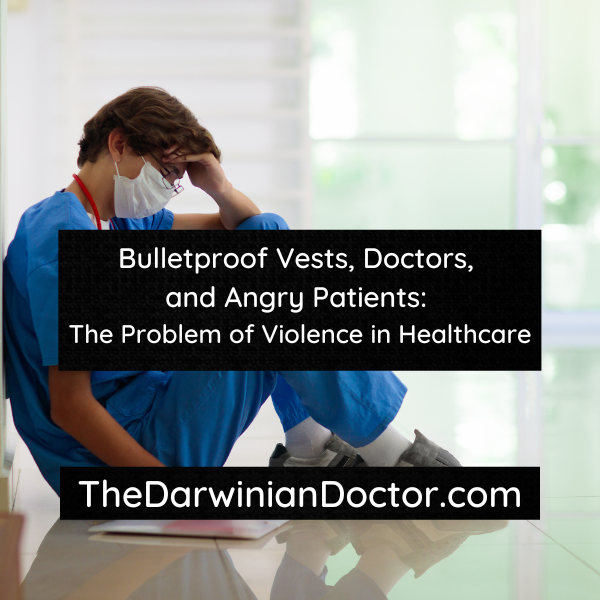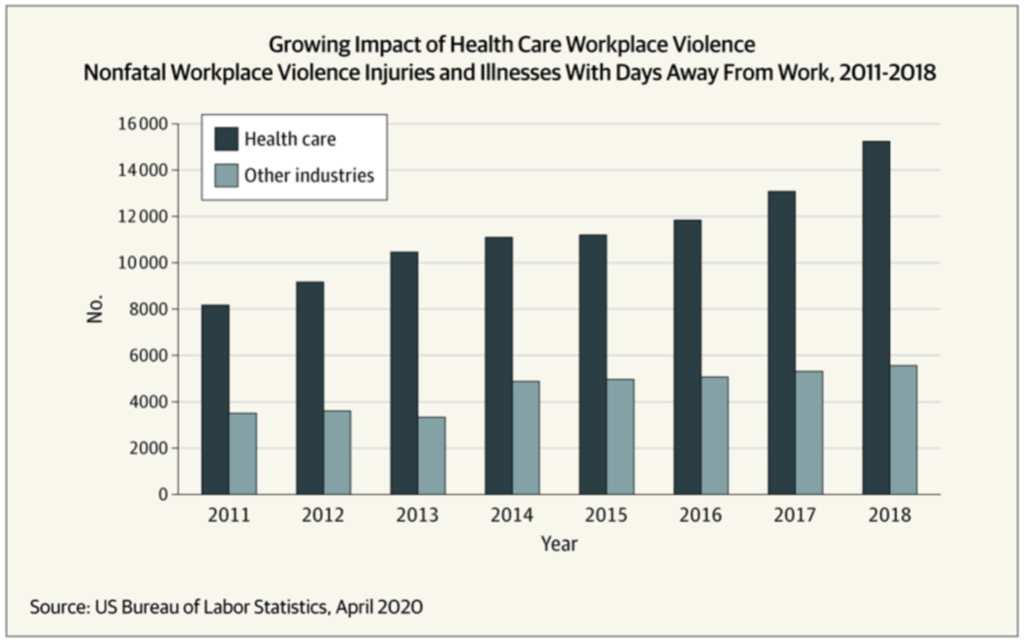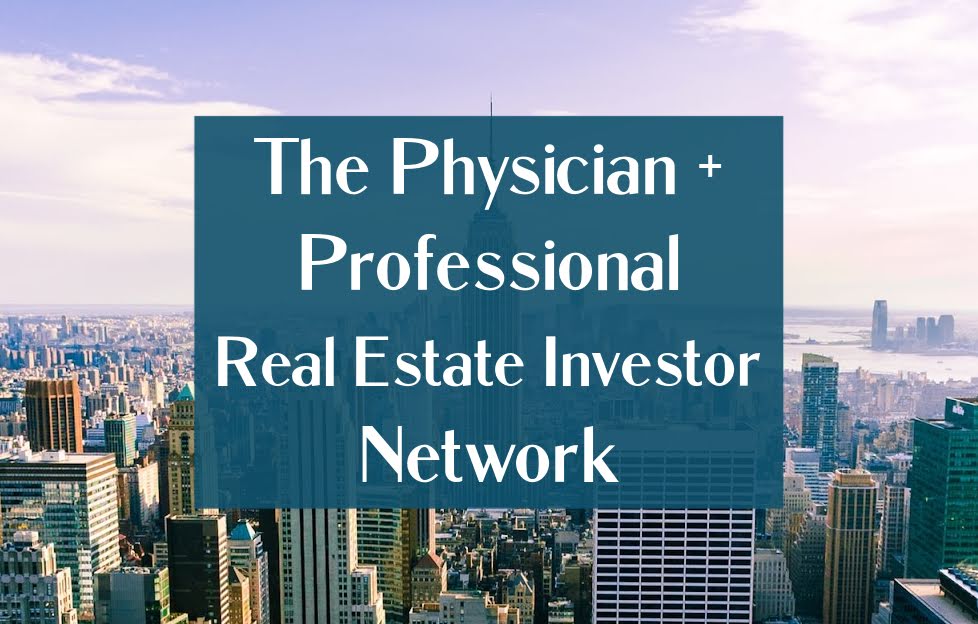In this post, I discuss the rising violence against healthcare workers in the US, including possible causes and solutions.

Introduction
“Make sure to schedule your fitting for your bulletproof vest, Dr. Shin.”
It was said so casually that I thought she was joking. But then when our admin followed up the next day to schedule my appointment with the vest vendor, I knew she wasn’t joking at all.
Physicians are being murdered by patients
We live in a nation where every year, there are high-profile murders of physicians by patients.
Just recently, a pediatric orthopedic surgeon named Dr. Benjamin Mauck was gunned down by a patient in his medical clinic in Memphis. Last year, another orthopedic surgeon named Dr. Preston Phillips and a sports medicine physician named Dr. Stephanie Husen were killed by a patient in Tulsa.
Nurses are frequent victims as well. Some surveys estimate that 25% of nurses report being assaulted by patients.
In fact, violence and assault on healthcare workers has been rising swiftly for the past decade. And judging by reports, the pandemic made things even worse.


Chief of service
In a prior life, I was chief of urologic surgery in a large medical center in California. As chief, I was one of two ultimate decision makers for our department of about a dozen surgeons and about a seventy staff.
The role was less glamorous than it sounds. Although the job came with the unique opportunity to spearhead projects to benefit our patients and my physician partners, it also came with the scourge of middle management: complaints. The vast majority of patient and physician complaints eventually trickled their way into my inbox for review and response.
I dealt with a lot of patient anger related to appointment delays and poor communication. Those were easy. But by far the most troubling issues were related to sexual harassment and physical threats directed at my staff and physicians.
Sexual harassment was distressingly common. For some of the staff, it seemed to be a weekly occurrence. While I advocated for the staff, it often seemed like we had very limited tools to protect our staff from harassment. The patients had real medical needs, after all. We were obliged to care for them, regardless of the harassment.
So we used soft deterrence techniques like our patient code of conduct, phone calls and letters. We had varying levels of success. When we got physical threats of violence though, things became very serious, very fast.
But how did I end up with a bulletproof vest?
The Threat
Shortly before I joined my department as a freshly graduated urology resident, a California urologist was killed by his patient. His murder weighed heavily on our department, as did the crazy reasoning behind the murder.
Though the circumstances were different, there were patients that had made real threats of violence against specific physicians in my department as well. Violence in healthcare had become all too real for my colleagues. The surgeons looked for options to help keep them safe. In addition to security upgrades to the clinic, they were issued bulletproof vests.
So when I joined my department, I was issued a bulletproof vest as well.
My Bulletproof Vest
I first kept my bulletproof vest propped against the wall of my office within easy reach. It eventually migrated to a drawer and then finally under the couch. (Yes, I had a small couch in my office. I often slept there while I was on call.)
As the vest laid amongst the dust bunnies, I thought about it less and less.
The exceptions were when doctor murders were in the news, or when we had threatening patients in the clinic. But rather than feeling comforted by the vest, I started to see it as a potent symbol of all that is wrong with the doctor-patient relationship these days.
The Veteran
One threatening patient remains bright in my memory. He was a veteran of the armed forces. His humor had a sarcastic, bitter bite at baseline, and got worse when he felt uncomfortable. We were tasked with completing a hematuria workup, which involved placing a flexible scope into his bladder to inspect for bladder cancer.
When he was being prepped for his cystoscopy, he made several inappropriate comments about his genitalia to the nursing staff. When challenged about the comments, first by the nurse and then by a physician, the situation quickly escalated. Eventually, the procedure was postponed, much to the frustration of the patient. He felt this was just another example of doctors and healthcare jerking him around.
He became increasingly angry and told us about his firearm collection. While he was gathering his belongings, he hinted that he’d like to use his guns against us.
Over the days that followed, I navigated our department’s response to the patient. This involved endless conference calls with administration and the patient to determine the actual threat and pick a path forward.
Eventually, the patient got his cystoscopy, but it was only after months of painful negotiation and hand wringing.
His threat of violence eventually fizzled out. We got lucky. Others aren’t lucky enough to avoid violence in healthcare.
Patients are frustrated
No doctor enters the medical field expecting to need body armor, but the grim reality is that violence towards healthcare professionals is on the rise. The stress of this potential danger adds yet another contributor to the epidemic of physician burnout.
As a physician who is active on social media, I interact with the public in ways that allows for unfiltered and anonymous feedback.
While there is always a contingent that comes to the defense of physicians and healthcare workers, there is also a portion of the audience that sees healthcare workers as the enemy.


The fact is, many people are frustrated with the medical care in this country, and doctors in particular.
There are many reasons why this is the case, but I’ll just touch on a few.
Fear of financial ruin
Navigating the healthcare system in the US can be a labyrinthine and frustrating experience for patients, often complicated by insurance restrictions and unforeseen costs. Therefore, patients often feel slighted by the system, and feel as though their concerns are being overlooked, their pain minimized, and their health commoditized.
I’ve seen so many patients that allow their diseases to go untreated rather than risk financial ruin from seeking care. There is a palpable fear out there that the healthcare system is aligned against them.
This fear can easily turn into anger. When it does, the anger and violence is often misdirected at those on the frontline of healthcare – our doctors, nurses, pharmacists, and technicians. These professionals become the unwilling targets of a system that is increasingly perceived as uncaring, unyielding, and unresponsive.
Who’s to blame?
The more I learn about the for profit world of insurance and pharmaceuticals, the more I worry about the future of healthcare in our country. It only takes a few Dr. Glaucomflecken videos to learn that your suspicions are correct: for many in healthcare, it’s profit over patient care.
It’s also worth noting that the increased workload and stress on physicians due to the doctor shortage is increasingly leading to burnout.
When doctors are overworked and burnt out, they may not be able to provide the level of care and attention that each patient deserves, feeding into the cycle of frustration and disillusionment.
I personally felt this most acutely in clinic. With a full schedule of patients but too few assistants to help with check-in, vitals, and appointment creation, we’d often fall behind. As the patients waited longer, they became frustrated and I became stressed, leading to a worse experience all around.
Read more: The Epidemic of Physician Burnout
What should we do?
Addressing this issue requires systemic change, which I fear is impossible in the near future due to the partisan nature of our current government. The solution will take a multifaceted approach and will require changes to insurance policies, billing transparency, and free market economics. I would have guessed that we were at a breaking point in American healthcare long ago. But each year it only seems to get worse.
Part of my rationale for splitting my time between medicine and business is the feeling that I need to hedge my bets. As I see the situation worsen every year, I feel that it’s only prudent to have a back up plan. For me, that’s creating additional sources of income via real estate investing and striving for early financial independence.
But I understand that most physicians won’t follow me down this path. Active real estate investing isn’t for everyone, after all.
Read more:
Perhaps artificial intelligence will save healthcare?
Conclusion
Maybe one day when the trust between patient and physician is restored, we will stop reading about physician murders.
We owe it to ourselves, as healthcare providers, to strive for a system that prioritizes our safety and well-being. More than anything, we owe it to our patients. They deserve a system that listens, understands, and acts in their best interest, a system where trust and empathy replace frustration and fear.
Until that better system materializes, we’ll continue to see violence in healthcare and doctors leaving medicine for greener pastures.
— The Darwinian Doctor
Have you been a victim of violence in the workplace? Let me know in the comments below and make sure to subscribe for more!
Want to support the blog?
- Join our investor club at Cereus Real Estate
- Visit my Recommendations page
- Check out my wife’s food blog: Eat Dessert First
- Stay at our luxury short term rentals
- Check out my TikTok channel
- Follow me on Instagram
- Follow me on YouTube
- Contact me with questions
Perhaps you’re more of a Facebook type?
Are you a physician, spouse, or professional and you’re interested in using Real Estate to gain financial freedom? Join us in our Facebook group and accelerate your journey!




1 comment
That’s extremely informational. Thanks for sharing this!